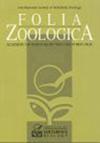与美洲水貂共生的水鼠的空间利用、栖息地选择和日常活动
Q2 Agricultural and Biological Sciences
引用次数: 9
摘要
摘要采用诱捕法、无线电遥测法和相机诱捕法研究了栖息在池塘中部的水田鼠群。在中间池塘内,水鼠不喜欢任何特定类型的滨海植被,并且避开池塘内的开阔水域。男性平均日活动距离为118米,女性平均日活动距离为53米。在整个研究期间,无线电追踪个体在其家乡范围内的两个位置之间的最大距离为450米。水鼠在研究池塘之间的活动非常有限。大多数藏身处都在池塘周围。水田鼠大多在夜间活动。本文章由计算机程序翻译,如有差异,请以英文原文为准。
Space use, habitat selection and daily activity of water voles Arvicola amphibius co-occurring with the invasive American mink Neovison vison
Abstract. A water vole Arvicola amphibius population inhabiting midfield ponds was studied by live-trapping, radio-telemetry and with camera traps. Within the midfield ponds, water voles did not prefer any particular type of littoral vegetation and avoided open water areas within the ponds. The mean distance of daily movements was 118 m for males and 53 m for females. The maximum distance between two locations of a radio-tracked individual within its home range during the whole study period was 450 m. Water vole movements between the studied ponds were very limited. Most of the hiding places were located in the areas around ponds. Water voles were active mostly during the night.
求助全文
通过发布文献求助,成功后即可免费获取论文全文。
去求助
来源期刊

Folia Zoologica
生物-动物学
CiteScore
1.70
自引率
0.00%
发文量
0
审稿时长
3 months
期刊介绍:
Information not localized
 求助内容:
求助内容: 应助结果提醒方式:
应助结果提醒方式:


